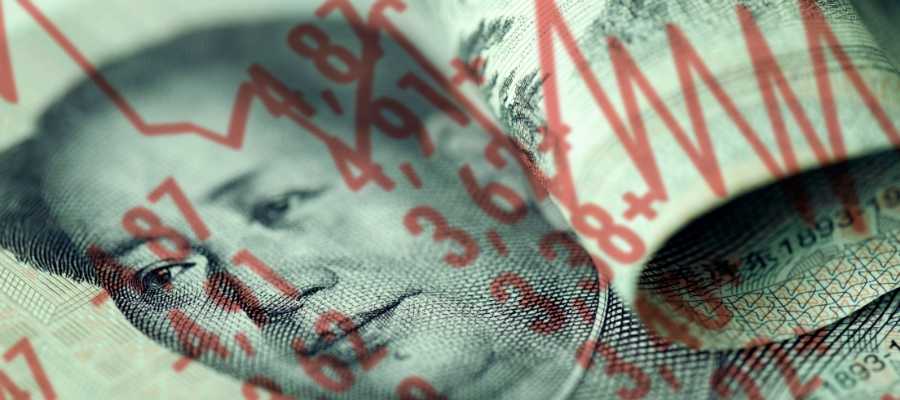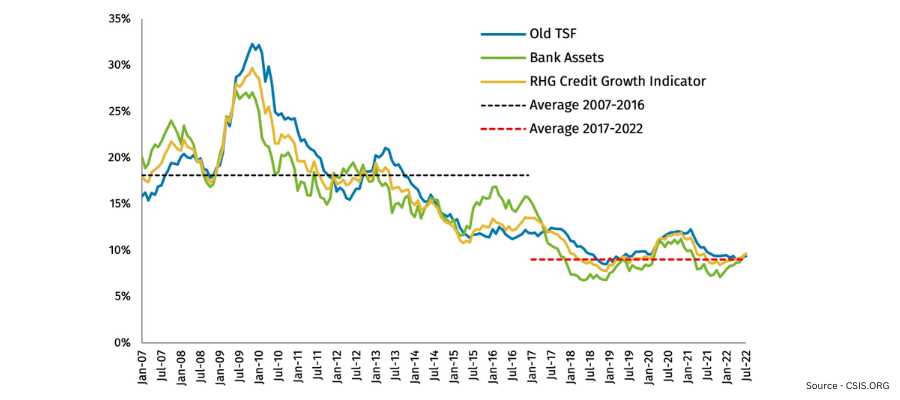
China’s Economy Crises: Causes, Impact, and Lessons for India
Pranay
Contributor
China’s economy has been a topic of great interest and discussion recently. From its rapid growth to its current challenges, understanding China’s economic landscape is crucial. In this article we will look into the causes, impacts, and lessons that India can learn from China’s possible economic crisis.
Before that, let us understand what difficulties the Chinese government faced after the 2008 Global economical crises.
China After 2008's Economical Crises

The global financial crisis of 2008 had made a dent on economies worldwide. and China was no exception. In response to the crisis, the Chinese government recognized the need to reduce their reliance on external factors for economic growth. This led them to adopt a strategy of artificially inflating their economy, which had some pretty bad consequences. In this section, we look into the details of this approach and the challenges it brought forth.
Causes of the Economic Crisis
The 2008 global financial crisis created a ripple effect that reverberated across the Chinese economy. As international demand for Chinese goods and services were decreasing, China’s export-dependent economy faced a significant downturn. This made the Chinese authorities to seek alternative ways to sustain economic growth.
1. Artificial Inflation of Economy
In order to counter the economic slow down, the Chinese government decided to artificially inflate the economy. They did this by pushing a substantial amount of money into various sectors. They encouraged banks to provide loans to businesses and state-owned companies. This led to increasing liquidity in the market. The strategy aimed to stimulate economic activity, boost production, and sustain employment levels.
2. The Target Deficit Issue
The Chinese approact to inflate its economy artificially brought about a new set of challenges. One of the primary concerns was the target deficit issue faced by Chinese local governments. These governments were tasked with achieving specific growth targets, but the imposed regulations made it difficult for them to borrow the necessary funds. As a result, they struggled to meet their targets, hindering the overall economic progress.
3. Lending Restrictions and Bureaucratic Processes
Another obstacle that the Chinese Government faced was in the form of lending restrictions imposed by banks. Banks met strict regulations and bureaucratic loan approval processes as the government encouraged increased lending. This resulted in delays and a slow pace of loan disbursement, which impeded the businesse’s ability to access the capital required for growth and expansion. The restrictions stunted the banks from making higher profits. This also limited their ability to support economic growth effectively.
4. The Rise of Shadow Banking
In addition to lending restrictions, China witnessed the rise of shadow banking. Shadow Banking is an unregulated financial system that operated parallel to traditional banking channels. These institutions offered loans and financial services outside the purview of regulatory authorities. While this provided some relief by providing alternative financing options, it also posed risks to the stability of China’s financial system. The lack of oversight and transparency associated with shadow banking raised concerns about potential instability and the misallocation of resources.
To summarize,
- The global financial crisis of 2008 prompted the Chinese government to employ a strategy of artificial inflation to sustain economic growth.
- However, this approach brought forth various challenges, including the target deficit issue faced by local governments, lending restrictions imposed on banks, and the rise of shadow banking.
- These factors created a complex economic landscape that required careful navigation.
- Understanding the intricacies of China’s response to the crisis provides valuable insights into the potential consequences of artificial inflation and the importance of balanced economic policies.
Now let us understand the impacts of these actions on the Chinese economy.
Impacts of the Economic Crisis

1. Real Estate Crisis
The real estate crisis in China has been characterized by unfinished projects and delays in delivery. As mentioned earlier, developers in China took on massive amounts of debt to fund new construction projects, resulting in a surplus of unsold properties. Many builders faced financial constraints and struggled to complete existing projects, leaving homebuyers in a state of uncertainty.
This crisis had a significant impact on defaulting homebuyers and falling property prices, both of which had a ripple effect on the overall economy. Homebuyers who had invested in these unfinished projects found themselves unable to take possession of their properties, leading to frustration and financial distress. As a result, many homebuyers defaulted on their loans, contributing to a decline in consumer confidence and a further slowdown in the real estate market.
The falling property prices also had a detrimental effect on the economy. The decrease in property values resulted in a decline in household wealth, leading to reduced consumer spending. As explained earlier, the concept of the wealth effect states that people tend to spend more when the value of their assets increases. However, in the case of China, declining housing prices led to a decrease in consumer spending, as people became more cautious with their expenses.
2. Banking Crisis

The economic crisis in China also manifested in a banking crisis, with several Chinese banks collapsing due to mass defaults and frozen deposits. As defaulting homebuyers and businesses struggled to meet their financial obligations, banks faced liquidity issues and were unable to honor customer deposits. This led to a loss of trust and confidence in the banking sector.
The vulnerability of China’s banking sector became evident as the crisis unfolded. It became clear that the banks were ill-equipped to handle the magnitude of the defaults and the frozen deposits. This vulnerability poses a significant risk to the overall economy, as a weakened banking sector can hinder lending and investment, hampering economic growth and stability.
3. Wealth Effect and Economic Slowdown
The wealth effect played a crucial role in the economic slowdown experienced in China. As mentioned earlier, declining housing prices resulted in a decrease in household wealth. When people perceive their wealth to be diminishing, they tend to cut back on their variable expenses such as entertainment, dining out, and vacations.
The reduction in consumer spending caused by the wealth effect had a direct impact on the overall economy. With consumers tightening their belts, businesses across various sectors experienced a decline in revenue. This economic slowdown further exacerbated the crisis, as it created a negative feedback loop, leading to reduced business investment, job losses, and a decline in economic growth.
Lessons for India
1. Impact on India
The economic crisis in China is expected to have significant impacts on India. As discussed earlier there is a potential decrease in exports to China. This decline can be attributed to China’s slowing economy and its banking and real estate crises. Sectors heavily reliant on exports to China, such as manufacturing, textiles, and agriculture, may experience a negative impact.
On the flip side, the Chinese crisis also presents opportunities for India. With China facing economic challenges, foreign investors may seek alternative destinations for their investments. India, with its growing economy and vast market, becomes an attractive option. In 2022 and 2023, India’s exports to China have already reduced by 28%, reaching 15.32 billion dollars. To capitalize on this opportunity, the Indian government should focus on creating a favorable investment climate by streamlining regulations and improving infrastructure.
2. Importance of Free Market Regulation
The Chinese crisis underscores the importance of the Indian government acting as a regulator rather than a controller of the free market. China’s excessive government interference has led to distorted economic outcomes and unintended consequences. India must learn from this and avoid similar pitfalls.
By allowing market forces to operate freely, the Indian government can enable businesses to thrive and attract investments. It is crucial to provide a level playing field for all market participants, transparent regulations, and fair competition. By maintaining a free market framework, India can promote innovation, entrepreneurship, and investment.
The Chinese crisis has highlighted the consequences of artificially inflating the economy and relying on unsustainable practices. To prevent such crises, India should prioritize a free market system and avoid excessive government control. By doing so, India can build a resilient and sustainable economy that is less susceptible to external shocks.
Conclusion
Understanding China’s economic crisis is crucial for India and the world. By analyzing the causes, impact, and lessons learned, India can navigate its own economic path more effectively. With a focus on free market principles and regulatory oversight, India can strive for sustainable economic growth.
Share this insight
Spread the Alpha
If this analysis helped you, pass it along to your trading desk or community.
Related Articles
More ideas that align with your trading playbook.

Intraday Trading Tips for Beginners in India
Intraday trading, the act of buying and selling financial instruments within the same trading day, can be a lucrative avenue for investors…

Why People Prefer To Enrol In PMP Training?
Project the board abilities are among the most esteemed and pursued credits in the quick-moving business industry. Project the executive’s Proficient accreditation…

The Unstoppable Force: TATA Group
The world of business is often defined by visionary leaders and iconic conglomerates that shape industries and economies. Among them, the TATA…



